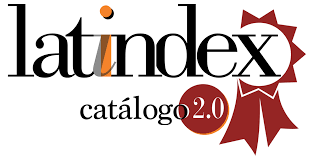Facebook como herramienta de Relaciones Públicas en las empresas: Información de negocios y de RSE en las empresas con mejor reputación a nivel mundial / Facebook as a Public Relations tool in companies: Information of business and the CSR in the world´s
DOI:
https://doi.org/10.5783/revrrpp.v7i14.478Palabras clave:
Relaciones Públicas, estrategia, redes sociales, Facebook, Internet, RSEResumen
Este artículo tiene como objetivo conocer los principales contenidos que difunden las empresas en Facebook, y los recursos de información que utilizan para ello. Los resultados de la investigación indican que la presencia de las empresas en Facebook está orientada a la difusión de contenidos de negocios, y muy pocas veces aprovechan la red social para promover la RSE, con poca interacción. Así, el uso de Facebook en las empresas se caracteriza por la difusión de información comercial, y no tanto de la Responsabilidad Social Empresaria (RSE), aplicando recursos poco interactivos. Por lo tanto, es necesario que las empresas revisen sus estrategias de comunicación y Relaciones Públicas en esta red social e integren todos los aspectos organizacionales, fomentando el diálogo y estimulando a los usuarios a involucrarse en las conversaciones.
Descargas
Citas
Avidar, R., Ariel, Y., Malka, V., & Levy, E. C. (2013). Smartphones and young publics: A new challenge for public relations practice and relationship building. Public Relations Review, 39(5), 603-605. http://doi.org/10.1016/j.pubrev.2013.09.010
Barnes, N. G., Lescault, A. M., & Andonian, J. (2012). Social Media Surge by the 2012 Fortune 500: Increase Use of Blogs , Facebook , Twitter and More, 1-9.
Baruah, T. D. (2012). Effectiveness of Social Media as a tool of communication and its potential for technology enabled connections: A micro-level study. International Journal of Scientific and Research Publications, 2(1), 1-10. http://doi.org/ISSN 2250-3153
Bortree, D. S., & Seltzer, T. (2009). Dialogic strategies and outcomes: An analysis of environmental advocacy groups’ Facebook profiles. Special Section on China Public Relations, 35(3), 317-319. http://doi.org/10.1016/j.pubrev.2009.05.002
Capriotti, P. (2011). Communicating corporate responsibility through the Internet and Social Media. En Ø. Ihlen, J. L. Bartlett, & S. May (Eds.), The Handbook of Communication and Corporate Social Responsibility (358-378). Boston: Wiley-Blackwell. http://doi.org/10.1002/9781118083246
Capriotti, P., Carretón, C., & Castillo, A. (2016). Testing the level of interactivity of institutional websites: From museums 1.0 to museums 2.0. International Journal of Information Management, 36(1), 97-104. http://doi.org/10.1016/j.ijinfomgt.2015.10.003
Capriotti, P., & Moreno, Á. (2007). Corporate citizenship and public relations: The importance and interactivity of social responsibility issues on corporate websites. Public Relations Review, 33(1), 84-91. http://doi.org/10.1016/j.pubrev.2006.11.012
Carim, L., & Warwick, C. (2013). Public Relations Review Use of social media for corporate communications by research-funding organisations in the UK. Public Relations Review, 39(5), 521-525. http://doi.org/10.1016/j.pubrev.2013.08.006
Chaudhri, V., & Jian Wang. (2007). Communicating Corporate Social Responsibility on the Internet: A Case Study of the Top 100 Information Technology Companies in India. Management Communication Quarterly, 21(2), 232-247. http://doi.org/10.1177/0893318907308746
Cho, M., Furey, L., & Mohr, T. (2016). Communicating Corporate Social Responsibility on Social Media : Strategies , Stakeholders , and Public Engagement on Corporate Facebook. Business and Professional Communication Quarterly, 1-18. http://doi.org/10.1177/2329490616663708
Chu, S. (2011). Viral Advertising in Social Media : Participation in Facebook Groups and Responses Among College-Aged Users. Journal of Interactive Advertising, 12(1), 30-43. http://doi.org/10.1080/15252019.2011.10722189
Claes, F., & Deltell, L. (2013). Museos Sociales. Perfiles Museísticos en Twitter y Facebook 2012-2013. El Profesional de la Informacion, 23(6), 594-602. http://doi.org/10.3145/epi.2014.nov.06
Cortado, F. J., & Chalmeta, R. (2016). Use of social networks as a CSR communication tool. Cogent Business & Management, 3(1), 1187783. http://doi.org/10.1080/23311975.2016.1187783
Devaney, E. (2015). Social Media Benchmarks Report 2015. Recuperado a partir de https://cdn2.hubspot.net/hub/53/file-2415418647-pdf/00-OFFERS-HIDDEN/social-media-benchmarks-2015.pdf?t=1423113374840
DiStaso, M. W. (2013). A Benchmark Analysis of the Strategic Use of Social Media for Fortune’s Most Admired U.S. Companies on Facebook, Twitter and Youtube. Public Relations Journal, 7(1), 1-33.
Distaso, M. W., & McCorkindale, T. (2012). Social Media : Uses and Opportunities in Public Relations. Global Media Journal, 5(2), 75-82.
DiStaso, M. W., McCorkindale, T., & Wright, D. K. (2011). How public relations executives perceive and measure the impact of social media in their organizations. Public Relations Review, 37(3), 325-328. http://doi.org/10.1016/j.pubrev.2011.06.005
Eisenegger, M., & Schranz, M. (2011). Reputation Management and Corporate Social Responsibility. En B. and M. Ihlen (Ed.), The handbook of Communication and Corporate Social Responsibility (129-146). John Wiley & Sons, Inc.
Eyrich, N., Padman, M. L., & Sweetser, K. D. (2008). PR practitioners’ use of social media tools and communication technology. Public Relations Review, 34(4), 412-414. http://doi.org/10.1016/j.pubrev.2008.09.010
Facebook. (2017). Facebook newsroom: Company Info. Recuperado 1 de enero de 2017, a partir de http://newsroom.fb.com/company-info/
Gómez-Vásquez, L. (2013). Me gusta o te sigo : Análisis de la comunicación de prácticas de Responsabilidad Social Corporativa a través de los medios sociales. Correspondencias & Análisis, 3, 89-109. Recuperado a partir de http://www.correspondenciasyanalisis.com/en/pdf/rp/2_me_gusta_sigo.pdf
Guillory, J. E., & Sundar, S. S. (2014). How Does Web Site Interactivity Affect Our Perceptions of an Organization? Journal of Public Relations Research, 26(1), 44-61. http://doi.org/10.1080/1062726X.2013.795866
Haigh, M. M., Brubaker, P., & Whiteside, E. (2013). Facebook: examining the information presented and its impact on stakeholders. Corporate Communications: An International Journal, 18(1), 52-69. http://doi.org/10.1108/13563281311294128
IAB Spain Research. (2010). Libro blanco de la comunicación en medios sociales. Revista de Comunicación Interactiva (Vol. 8). Madrid. Recuperado a partir de http://www.iabspain.net/wp-content/uploads/downloads/2012/02/8_LB_Comunicacion_Medios_Sociales.pdf
Iniesta, C. R. (2012). El uso de las herramientas digitales por parte de los bancos . El caso de la imagen en Internet de Banco Santander y BBVA en época de crisis. Revista Internacional de Relaciones Públicas, II, 51-72.
Invodo. (2016). Video Statistics. The Marketer’s Summary 2016. Recuperado a partir de http://www.invodo.com/thank-you/thank-you-2016-video-statistics/
Isenmann, R. (2006). «CSR online: internet based communication». Management models for corporate social responsibility, 247-256.
Jo, S., & Kim, Y. (2003). The Effect of Web Characteristics on Relationship Building. Journal of Public Relations Research, 15(3), 199-223. http://doi.org/10.1207/S1532754XJPRR1503_1
Kent, M. L. (2013). Using social media dialogically: Public relations role in reviving democracy. Public Relations Review, 39(4), 337-345. http://doi.org/10.1016/j.pubrev.2013.07.024
Ki, E.-J., & Nekmat, E. (2014). Situational crisis communication and interactivity: Usage and effectiveness of Facebook for crisis management by Fortune 500 companies. Computers in Human Behavior, 35, 140-147. http://doi.org/10.1016/j.chb.2014.02.039
Kilgour, M., Sasser, S. L., & Larke, R. (2015). The social media transformation process: curating content into strategy. Corporate Communications: An International Journal, 20(3), 326-343. http://doi.org/10.1108/CCIJ-07-2014-0046
Linke, A., & Zerfass, A. (2012). Future trends in social media use for strategic organisation communication : Results of a Delphi study. Public Communication Review, 2(2), 17-29. Recuperado a partir de https://epress.lib.uts.edu.au/journals/index.php/pcr/article/viewFile/2736/3026
Losada-Díaz, J. C., & Capriotti, P. (2015). La comunicación de los museos de arte en Facebook: comparación entre las principales instituciones internacionales y españolas. Palabra Clave - Revista de Comunicación, 18(3), 889-904. http://doi.org/10.5294/pacla.2015.18.3.11
Luarn, P., Lin, Y.-F., & Chiu, Y.-P. (2015). Influence of Facebook brand-page posts on online engagement. Online Information Review, 39(4), 505-519.
Macnamara, J. (2016). Organizational listening: Addressing a major gap in public relations theory and practice. Journal of Public Relations Research, 28(3/4), 146-169. http://doi.org/10.1080/1062726X.2016.1228064
McCorkindale, T. (2010). Can you see the writing on my wall? A content analysis of the Fortune 50’s Facebook social networking sites. Public Relations Journal, 4(3), 1-14. http://doi.org/10.1017/CBO9781107415324.004
Neill, M. S., & Moody, M. (2015). Who is responsible for what? Examining strategic roles in social media management. Public Relations Review, 41(1), 109-118. http://doi.org/10.1016/j.pubrev.2014.10.014
Oliveira, A., & Capriotti, P. (2014). Internet as a key tool for publics to communicate with organizations. The case of the Spanish energy sector. Catalan Journal of Communication & Cultural Studies, 6(1), 143-151. http://doi.org/10.1386/cjcs.6.1.143_1
Pérez Dasilva, J., Genaut Arratibel, A., Meso Aierdi, K., Mendiguren Galdospín, T., Marauri Castillo, I., Iturregui Mardaras, L., Rivero Santamarina, D. (2013). Companies on Facebook and Twitter . Current situation and communication strategies. Revista Latina de Comunicación Social, 68, 676-695. http://doi.org/10.4185/RLCS-2013-996en
Pletikosa-Cvijikj, I., & Michahelles, F. (2013). Online engagement factors on Facebook brand pages. Social Network Analysis and Mining, 3(4), 843-861. http://doi.org/10.1007/s13278-013-0098-8
Quintly. (2016). Brand Study H1 2016: How do 30 of the biggest brands use Facebook? Recuperado a partir de https://www.quintly.com/blog/2016/10/30-biggest-brands-on-facebook-analyzed-in-depth/
Rodríguez Fernández, Ó. (2012). Facebook. Aplicaciones profesionales y de empresa. Madrid: Anaya Multimedia.
Safko, L., & Brake, D. K. (2009). The Social media bible : tactics, tools, and strategies for business success. Hoboken, N.J. : John Wiley. Recuperado a partir de http://cataleg.urv.cat/record=b1408053~S13*cat
Serrano-Cobos, J. (2016). Tendencias tecnológicas en internet: hacia un cambio de paradigma. El profesional de la información, 25(6), 843-850. http://doi.org/10.3145/epi.2016.nov.01
Shih, C. C. (2009). The Facebook Era: Tapping Online Social Networks to Built Better Products, Reach New Audiences, and Sell More Stuff. USA: Prentice Hall.
Sixto-Garcia, J., Aguado-Dominguez, N., & Riveiro-Castro, R. (2017). Presencia 2.0 de las pymes gallegas: niveles de participación y engagement con los usuarios. Revista Latina de Comunicación Social, 72, 47-68. http://doi.org/http://dx.doi.org/10.4185/RLCS-2017-1153es
Tench, R., Moreno, Á., Navarro, C., & Zerfass, A. (2015). Does social media usage matter? How communicators perceive and practice digital communications. Public Relations Review, 41, 242-253. http://doi.org/http://dx.doi.org/10.1016/j.pubrev.2014.12.006
Wang, Y. (2015). Incorporating Social Media in Public Relations : A Synthesis of Social Media-Related Public Relations Research. Public Relations Journal, 9(2007), 1-14.
Waters, R. D., Burnett, E., Lamm, A., & Lucas, J. (2009). Engaging stakeholders through social networking: How nonprofit organizations are using Facebook. Public Relations Review, 35(2), 102-106. http://doi.org/10.1016/j.pubrev.2009.01.006
Descargas
Archivos adicionales
Publicado
Cómo citar
Número
Sección
Licencia
Los autores que publican en esta revista están de acuerdo con los siguientes términos:- Los autores conservan los derechos de autor y garantizan a la revista el derecho de ser la primera publicación del trabajo al igual que licenciado bajo una Creative Commons Attribution License que permite a otros compartir el trabajo con un reconocimiento de la autoría del trabajo y la publicación inicial en esta revista.
- Los autores pueden establecer por separado acuerdos adicionales para la distribución no exclusiva de la versión de la obra publicada en la revista (por ejemplo, situarlo en un repositorio institucional o publicarlo en un libro), con un reconocimiento de su publicación inicial en esta revista.
- Se permite y se anima a los autores a difundir sus trabajos electrónicamente (por ejemplo, en repositorios institucionales o en su propio sitio web) antes y durante el proceso de envío, ya que puede dar lugar a intercambios productivos, así como a una citación más temprana y mayor de los trabajos publicados (Véase The Effect of Open Access) (en inglés).




